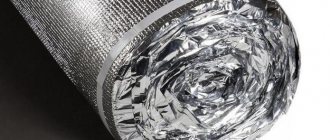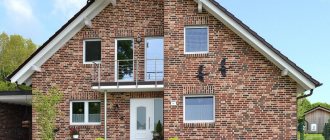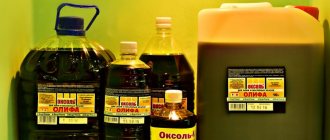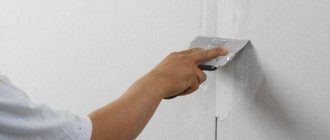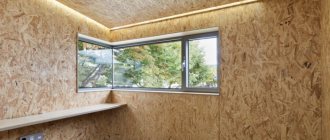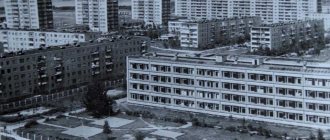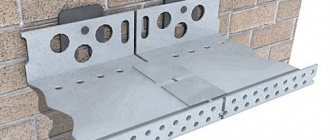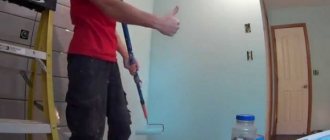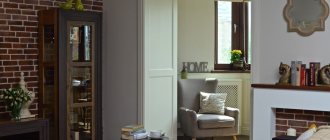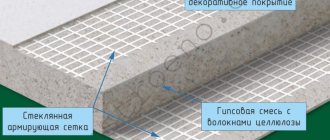Today, such a wide assortment is presented to the attention of potential buyers, it is not easy even for professional builders to understand this ocean of offers.
In this article I would like to take a closer look at what is the difference between plasterboard and gypsum fiber sheet - two universal materials intended for interior decoration, and what is better for finishing premises - gypsum fiber board or gypsum board?
To answer this question, we will conduct a comparative analysis of these two materials made on the basis of gypsum.
GVL
Gypsum fiber products consist of gypsum (80%), fluff pulp (15%) and special technological additives (5%). In a homogeneous mass, cellulose fibers act as a reinforcing mesh, providing high strength to the finished sheet; in addition, due to the presence of cellulose in the composition and the formation of the product under pressure, the level of viscosity increases.
Manufacturers produce 4 types of products:
- GVL standard for use in rooms with standard conditions.
- GVLV is a moisture-resistant option. For areas with high humidity.
- GVLO is a fire-resistant option. Suitable for finishing wooden buildings.
- GVLVO is a mixed product with additional protection from moisture and fire-resistant properties. Suitable for structures with sudden changes in temperature and humidity conditions.
Finished products differ only in markings. Sheets can also be marked with the letters “Ш” - sanded, or “NSH” - unsanded.
The sheets can vary in size as follows: thickness from 10 to 20 mm; width from 500 to 1200 mm; length from 1500 to 3000 mm.
Used for subsequent finishing with wallpaper, paint, decorative plaster or ceramic tiles.
Advantages of the material:
- the increased strength of the material allows a simple self-tapping screw screwed into the sheet to hold at least 30 kg of weight;
- due to their strength, the sheets can be used as a base for finishing the floor;
- the viscosity of the composition prevents the formation of a large amount of dust when cutting the material. In addition, fasteners are easy to fix without dowels;
- high degree of thermal protection;
- works as a sound insulator - provides a noise reduction of 40 dB;
- not flammable When exposed to direct fire, it only chars, suitable for cladding wooden structures;
- not afraid of exposure to high humidity;
- suitable for cladding walls of unheated buildings (due to increased frost resistance);
- able to absorb moisture and regulate the level of humidity in the room;
- contains no allergens or other harmful substances. Completely safe;
- does not change dimensions when humidity or temperature changes.
Flaws:
- high price;
- the heavy weight of the sheet is difficult for one master to cope with installation;
- does not have plasticity - does not bend.
Areas of application of the material and installation features
Due to their universal qualities, GVL and GKL materials are often used in the construction of interior partitions and false walls. The installation technology involves the manufacture of a supporting frame from wooden beams or aluminum profiles. Sheets of plasterboard or gypsum fiber are mounted on the manufactured frame.
Despite the fact that gypsum fiber boards and gypsum boards have sound-proofing qualities, in most cases hollow-wall structures are equipped with additional sound insulation and they can accommodate electrical wiring or hide communication systems.
Taking into account the fact that the materials have fire-resistant qualities, gypsum fiber sheets are used in the construction of boiler houses, electrical switchboards and other rooms with increased fire hazard. Also, non-combustible sheets can be used as cladding for wooden structural elements.
Photo: Gypsum fiber. Author: Ganyushkin Artemy.
Using gypsum fiber, you can level the floor covering. If in the case of a concrete screed you need to wait a long time for the solution to harden, then using gypsum fiber board the production of the floor covering is carried out several times faster. The quality of flooring made from gypsum fiber board sheets directly depends on the quality of the material used. By purchasing products from the manufacturer, you receive material that meets all requirements and quality standards.
The scope of application of gypsum fiber board and gypsum plasterboard materials is quite extensive. Installation work with sheets is carried out using frame and frameless methods. If a frame is not needed to level the wall surface, then installing the canvas using a frameless method would be optimal. This process involves the use of an adhesive solution applied to the wall surface. The gypsum panel is installed using the same technology as laying ceramic tiles, the only difference is in the size of the materials. The applied adhesive, when in contact with a sheet of drywall or gypsum fiber, ensures reliable adhesion. The adhesive for frameless installation of plasterboard or gypsum board sheets has a reinforced composition, which allows it to withstand the heavy weight of the material.
When the frame installation method is used, a frame is initially made. It is made from a profile or wooden beam. In order for all dimensions and parameters to be correct, markings are initially made. According to the markings, profiles are installed and a kind of frame with cells is formed. The resulting voids can be used as additional soundproofing of the room.
Photo: Drywall. Author: Ganyushkin Artemy.
The sheets are fixed with special screws. There are two types of screws: for wood and for metal; depending on the structure made, hardware is also selected. The screws are clamped with a special screwdriver. The head of the screw must be completely inserted into the sheet so that no unevenness is formed when finishing the surface.
It is enough to install additional sound insulation in the middle of the structure, and the apartment will be protected from extraneous noise and sounds. If the owner of the apartment does not have the appropriate education or skills, then installation work should be entrusted to professionals who will complete everything quickly and efficiently.
Wall cladding
Currently, covering walls with gypsum fiber board and gypsum board sheets is considered the most common way to level the surface of walls. Due to the characteristics of the material, perfectly flat and smooth surfaces are obtained, ready for finishing. Using gypsum material, you can make a structure of any configuration, and this process will take very little time.
Wall covering always begins with markings. The surface of the wall is marked for further work using laser equipment or a tape measure with a plumb line.
It is important to know! How the seams between the sheets will turn out depends on the correctness of the calculation and marking. With correct markings, the width of the seam does not exceed one millimeter.
The frame is installed according to the markings. The frame can be profiled or made of timber. The distance between the profiles should be within 40 - 60 centimeters from each other. The sheets are attached to the structure first on one side, and it should be understood that the smaller the gaps, the higher the soundproofing qualities of the structure will be.
If you need effective sound insulation of the partition, then soundproofing boards made of sound-absorbing materials can be installed inside the structure. Also at this stage, wiring and communication systems are installed. When everything is ready, the sheets are installed on the still open side.
Photo: Accordion gypsum fiber sheet. Author: Ganyushkin Artemy.
After fixing all sheets of gypsum material, you need to process the seams. To seal the seams, you can use soundproofing sealant, or reinforced mesh and putty. The seams are sealed with a spatula. When the wall surface is ready, you can move on to the final stage of finishing.
Ceiling lining
The ceiling is hemmed with gypsum fiber board and gypsum board sheets onto a pre-prepared frame. For its installation, as for other surfaces, markings are made according to all requirements. Before installing the gypsum boards, it is necessary to once again check all the corners and sides of the frame for evenness, only after that can the material be attached.
Photo: Sealing seams. Author: Ganyushkin Artemy.
To install sheets of drywall or gypsum fiber board you will need a special holder or the help of another person. Considering the weight of the product, it will be difficult to hold it under the ceiling and screw it on at the same time. Of course, craftsmen find ways to simplify their work, but such options are not suitable for beginners. Self-tapping screws are screwed around the perimeter of the sheet so that the cap fits into the material. After installation, the surface is puttied and prepared for painting or other type of finishing.
Wet areas
Due to the properties of LVGV, the material can be used in rooms with high humidity. As a rule, such rooms in an apartment are the bathroom, toilet and kitchen. When producing moisture-resistant gypsum fiber, a special additive is used that protects the surface from exposure to aggressive environments. The installation technology is no different from other premises; the only thing worth paying attention to is the labeling of the material. If you install regular gypsum fiber sheets by mistake, you will have to make new repairs very soon.
Floor covering
Gypsum fiber is often used to cover floors. The main advantage of this technique is that you do not need to wait long for the concrete screed to harden, and the surface is perfectly flat. The installation technology consists of seven stages:
- Waterproofing is laid on the prepared surface. For a concrete floor, it is quite enough to use polyethylene. The dimensions of the waterproofing should extend slightly onto the wall.
- The perimeter of the wall is covered with edge tape to prevent deformation and damage to the gypsum fiber boards.
- The surface of the waterproofing is covered with expanded clay or similar insulation. The thickness of the layer should not be less than 2 centimeters.
- Installation of gypsum fiber boards begins on the opposite side of the doorway and proceeds to the exit. The connecting grooves are treated with glue, and in addition they are additionally connected on the inside with self-tapping screws for better fixation.
- When the first layer is formed, it is treated with glue and the second is placed. Important! The second layer should be installed on the other side so that the joints are not in the same place.
- After installing the second layer, the seams can be treated with a special sealant, which will provide additional protection to the floor covering.
- The final stage is laying the final floor covering.
Advantages and disadvantages of GVL for floors
Recently, the use of gypsum fiber boards for rough flooring has become quite popular. Many experienced builders prefer this technology. Firstly, to work with GVL slabs, you do not need a long time to pour the concrete solution. It is enough to cut the slabs of the appropriate size, prepare a concrete or wooden base and you can install it. The ease of operation and speed of installation make this method popular among both professionals and amateurs.
However, like any material, LVG slabs for flooring have some disadvantages. The main disadvantage of installing gypsum fiber is that if the surface is not flat, then there is a possibility of breaking the slab, since the product is quite fragile. Also, the cost is a disadvantage. The price of VLG is higher than plasterboard with the same parameters.
Gypsum plaster and gypsum fiber today remain one of the most popular materials, and which one to choose depends on the buyer himself. Depending on the characteristics and features of the material, you can choose exactly what you need.
Soundproofing materials isover
Review of drywall (gypsum board) as a soundproofing material
GKL
To produce sheets of this type, gypsum (93%), cardboard (6%) and starch with water (1%) are used. The gypsum base is secured with sheets of cardboard on both sides, which provides additional resistance to stress.
Manufacturers produce 4 types of material:
- GKL standard. Designed for premises with standard operating conditions. It differs from others in its gray tint.
- GKLV - option with moisture protection. The primer with which the finished sheets are impregnated does not allow the base to absorb moisture, making the products suitable for finishing structures with high humidity. It differs from others in its green tint.
- GKLO is a fire-resistant option. The sheets are pink in color and are suitable for furnishing premises where increased fire resistance of surfaces is required.
- GKLVO is a mixed option for arranging saunas. It is characterized by increased resistance to open flame and moisture, has a green tint with red markings.
The sheets can vary in size as follows: thickness from 8 to 16 mm; width from 600 to 1200 mm; length from 2000 to 4000 mm.
The products are used to form ceilings, walls, partitions, arches and other structural elements.
Advantages:
- low cost;
- has excellent thermal insulation characteristics;
- ease of installation;
- the plasticity of the material allows the formation of curved structures;
- not subject to combustion. Plaster can only melt at high temperatures, but cardboard will burn. To eliminate this drawback, it is treated with special compounds in fire-resistant versions;
- sheets treated with moisture-resistant impregnations can be used in rooms with high humidity;
- to repair a separate section of the surface, it is not necessary to dismantle the entire sheet - it is enough to cut a piece of plasterboard to size and repair the defect;
- the material is suitable for installation in any type of premises for any type of finishing;
- does not contain allergens and other harmful substances that can evaporate during prolonged use;
- Suitable for masking various types of communications.
Flaws:
- plasterboard is very fragile, this disadvantage must be especially taken into account when transporting the material;
- low strength. The sheets cannot be used as a base for hanging heavy objects and furniture (maximum weight 25 kg);
- low sound insulation rates. For partitions it is necessary to use additional mineral wool boards.
Gypsum fiber
Cellulose fiber gives plasterboard sheets strength.
This material appeared on our market much later than plasterboard sheets, but was already able to compete with its popular brother. The design of a gypsum fiber sheet, as in the design of gypsum boards, is based on the gypsum component.
However, the production technology of gypsum fiber boards differs from the production technology of gypsum boards. In this case, before pressing, gypsum is mixed with cellulose fiber, which plays the role of a reinforcing frame.
The surface of the gypsum fiber is not covered with cardboard, but is sanded and impregnated with water-repellent primers, which also prevent the formation of gypsum dust. The result is a multifunctional material that is not afraid of dampness and fire.
Pros of GVL
First of all, this material is good for its strength, which far exceeds the strength of drywall of similar thickness. The undeniable advantages also include the already mentioned moisture resistance and fire resistance. About the features of GVL, watch this video:
For rooms with particularly high humidity, for example, bathrooms, a special type of gypsum fiber with increased water-repellent properties is produced. In terms of its functionality, gypsum plasterboard is in no way inferior to plasterboard: it is used for the construction of partitions and wall cladding, for the creation of suspended ceiling structures and decorative interior structures.
What is the main difference
Let us list the main differences between the two materials:
- plasterboard is made of three layers, and gypsum fiber is a solid product;
- GVL has exceptional strength and is allowed for finishing when it is important for the surface to withstand powerful static loads;
- magnesium oxide and chloride are added to the composition of gypsum plasterboard; only gypsum is used in gypsum plaster;
- GCR has more restrictions for use;
- when cutting drywall with an angle grinder, a large amount of dust is generated, and gypsum fiber is cut with virtually no fine fractions;
- a gypsum board sheet cut with a construction knife is broken downwards, and gypsum board sheets are broken upwards;
- the large mass of gypsum fiber sheets does not allow the master to work alone;
- when finishing drywall with wallpaper, puttying of the surface is required; the same operation on gypsum plasterboard does not require additional preparation, except for masking the fasteners;
- GVL is difficult to bend, so only gypsum plasterboard is used for arched surfaces;
- To install gypsum fiber boards, a more powerful frame is prepared than for gypsum plasterboards, made of wooden bars or a metal profile with a wall thickness of 0.5 mm.
Drywall
GKL - plasterboard sheets - do not need unnecessary popularization. This is a material that is one of the most in demand in repair and construction work. Its structure is:
- Gypsum layer (93%).
- Cardboard layer (6%).
- Organic (1%).
To create a gypsum board, a layer of cardboard is glued onto the gypsum layer; it also contains small amounts of organic substances and humectants. The result is a durable material with a smooth surface, which is given to it by cardboard. Taken together, these properties make it possible to effectively use gypsum boards for various construction and repair needs.
Comparison of characteristics
To get a complete picture of the products in question, it is necessary to compare them according to their main parameters. Find out which is stronger, what density both sheets have, what heat and sound insulation properties they have, which products are more expensive, more environmentally friendly, and which are easier to install.
Strength and Density
The high density of gypsum fiber works great when laying floors, and the lower density of gypsum fiber allows you to firmly hold fasteners and hanging furniture in the room, but only when using dowels.
In terms of strength, the undoubted leader is GVL. The fiber reinforcement of the material allows it to withstand both impact and static loads without much damage, while forming corners or joints for gypsum fiber sheets, unlike gypsum boards, does not require special corners and masking tape.
Price
Often the most important criterion when selecting materials is not its characteristics, but the price. In terms of this indicator, the leader is plasterboard, which will cost the buyer from 70 rubles per sq.m. The cost of ordinary gypsum fiber sheets will already be from 180 rubles per sq.m., and for polished sheets you will have to pay 360 rubles per sq.m. and more.
Moisture-resistant and fire-resistant gypsum boards and gypsum fiber boards will cost 1.5-2 times more than conventional products, respectively. The cost of the most expensive gypsum boards reaches 900 rubles per sq.m.
Thermal and sound insulation
GVL have a higher density compared to gypsum plasterboard, which affects higher thermal insulation performance, but in practice this difference is almost indistinguishable.
The sound insulation performance of GVL is higher than that of gypsum plasterboard, therefore, when installing plasterboard partitions in a house or country house, it is recommended to lay additional insulating material, and GVL easily copes with this task and without additional costs.
Environmental friendliness
Both materials do not contain allergens or harmful substances that can evaporate and cause harm to humans.
Ease of installation
Both materials are easy to cut, easy to attach to the frame and easy to transport, but you need to keep in mind that gypsum fiber boards require less preparation for finishing.
What and in what case is it better to choose
After the comparison, we can confidently recommend which of the two materials is better suited for working in specific conditions.
Floor
To level the floor level or raise it, use durable gypsum plasterboard. You cannot choose a plasterboard sheet for this work. The best option for installing a gypsum fiber board floor is the application of two layers.
Walls and ceiling
What is better for walls - gypsum plasterboard or gypsum fiber board - depends on the functions of the structure and its operating conditions. Under standard conditions, it is better to line the walls with gypsum fiber - it can withstand the load perfectly, including wall cabinets in the kitchen. If it was decided to use gypsum board, then to strengthen the attachment points of hanging furniture, it is recommended to attach OSB strips.
For non-load-bearing partitions, both materials are recommended. It is recommended to cover the ceiling, especially with a multi-level installation, with plasterboard.
In conditions of high humidity, for example, for a bathroom, GKVL is used, and for preparing a steam room in a bath or sauna, LSU or GKLVO are suitable.
What to choose for surfaces with a complex configuration - gypsum plasterboard or plasterboard for walls? In this case, of course, you need to use gypsum board, the plasticity of which allows you to bend the sheet into the required shape.
Wet areas
For surface cladding in buildings with sudden changes in temperature and humidity conditions, only gypsum boards should be used, followed by finishing with ceramic tiles.
Plasterboard sheet
The product is a core (a plate molded from gypsum with the addition of a special filler), covered on both sides with cardboard. The cardboard layer adds smoothness and makes it stronger. It is intended exclusively for indoor use as it is not sufficiently resistant to moisture and stress. You can level the walls, suitable for making suspended ceilings and light interior partitions.
When choosing, pay attention to which category it belongs to:
- GKL - standard; designed for low and normal indoor humidity;
- GKLO – with fire-resistant impregnation; used for cladding frame houses, interfloor ceilings, shaft walls, load-bearing metal systems, insulating external structures from the inside;
- GKLV - special moisture resistant, with low water absorption rates; for finishing kitchens and bathrooms.
- Environmental Safety. Neither the core nor the cardboard wrapper contains substances harmful to health (for example, formaldehyde).
- Fire resistance. It is due to the high content of chemically bound water (up to 2 liters in the stove). Until it turns into steam, the temperature on the other side will not rise above 100°. Standard gypsum boards can withstand 20 minutes of fire before destruction, and gypsum boards - 50 minutes.
- Humidity level regulation. Thanks to their porous structure, the walls absorb excess moisture, and if the room becomes too dry, they release it.
- Flexibility in processing. It bends perfectly, allowing you to implement the most incredible design ideas. Arches and other convex shapes are created from wet plasterboard sheets. The slabs are easily cut with a sharp knife or grinder and adjusted to size, facilitating the installation of columns and niches.
- Easy to apply coatings. The walls are easy to putty, paint and prime – this is facilitated by a smooth surface.
The low strength of the structure does not allow the use of a hammer and nails in the process of hanging on the walls: it is better to use glue or self-tapping screws with dowels. To increase rigidity, they are most often mounted on a metal frame made of a profile.
